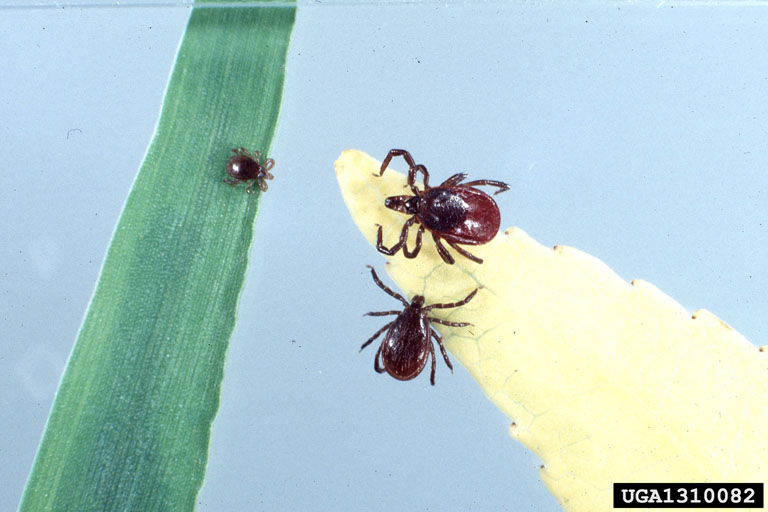Example Article for Broadwater County Extension Agent
Tick That Transmits Lyme Disease Found In Montana
 | Author:
Allison Kosto, MSU Broadwater County Extension Agent
MSU Broadwater County Extension Agent |
Tick That Transmits Lyme Disease Found in Montana
Allison Kosto
MSU Broadwater County Extension Agent
Along with mosquitoes, ticks are up there as one of my least favorite insects. Unfortunately, there are several species of ticks present in Montana. The most common types are the Rocky Mountain Wood Tick and the American Dog Tick. They can transmit several diseases, including Rocky Mountain Spotted Fever, Colorado Tick Fever and several canine diseases. Up until recently, Montanans didn’t have to worry about the threat of Lyme disease. While there have been cases of Lyme disease in our state, they have all been determined to have acquired it out of state. This is because historically, the two ticks that are vectors for Lyme disease have not been found in our state. This is now changing.
In March 2025, MSU Extension Schutter Diagnostic Laboratory confirmed the presence of the blacklegged tick, also called the deer tick, in Montana. This is the primary tick that carries and transmits Lyme disease. Its natural range is Eastern United States, but it is now prevalent in the Midwest and this discovery confirms it is continuing its westward expansion. The tick was removed from a hunting dog in Dawson County, which is in eastern Montana.
Blacklegged ticks go through four life stages: egg, larva, nymph and adult. After the egg hatches, the larvae or nymph will take a single bloodmeal from a small or medium sized animal such as a mouse or deer before molting and moving to the adult life stage. As an adult, the tick will take another bloodmeal. This time on a medium to large sized animal, such as deer or human. After this, they will lay their eggs and die. Blacklegged ticks are usually found in forested areas.
It's typically the nymphs or adult females that are found on humans. Unfortunately, they are much smaller than the ticks we commonly see in Montana. In fact, the nymphs are the size of a poppyseed, and adults are the size of a sesame seed. This makes it so much harder to see them.
Blacklegged ticks get Lyme disease from infected animals such as mice and voles. Deer are not hosts for Lyme disease but can help move around infected ticks. There is another tick called the Western Blacklegged Tick that is also known to carry Lyme disease. It is found along the west coast and has not been found in Montana.
Lyme disease is a bacterial infection that is primarily spread by the blacklegged tick. It is the most common disease vectored by an arthropod in the United States. In addition to humans, it can also affect dogs and horses. The tick must stay attached for 24 to 48 hours in order to transmit Lyme disease. Early symptoms of Lyme disease include a characteristic circular rash at the bite site along with fever, headache and fatigue. If it is not treated, Lyme disease can also affect joints, heart and nervous system.
At this time, it’s unknown of the extent of the blacklegged tick in our state. While it’s unlikely to have found its way to Broadwater County yet if they are moving from the east, it is something to watch out for, especially if you hunt, fish or recreate outdoors. May and June are the peak tick season, but they can be found anytime from spring to fall. The best defense is to wear long-sleeved shirts and pants and tuck your pants into your socks. Insect repellents are also helpful, specifically look for products that contain DEET or permethrin. When you get home, always do a thorough tick check. If you find a tick attached to your skin, remove it with tweezers by grasping the head as close to the skin as possible. It is recommended to save the tick in case it needs to be identified.
If you have a tick that you suspect may be a blacklegged tick or any tick that needs to be identified for possible disease transmission, bring it to MSU Extension Office in Broadwater County who can send it Schutter Diagnostic Lab for identification. Contact the office at 406-266-9242 or allison.kosto@montana.edu.
Article Images
Click on Image Thumbnail(s) to view fullsize image
PhotoCredit: Jim Occi, BugPics, Bugwood.org
Image 1 Caption: Blacklegged Tick: Nymph (left) and adults (right)
Jim Occi, BugPics, Bugwood.org
